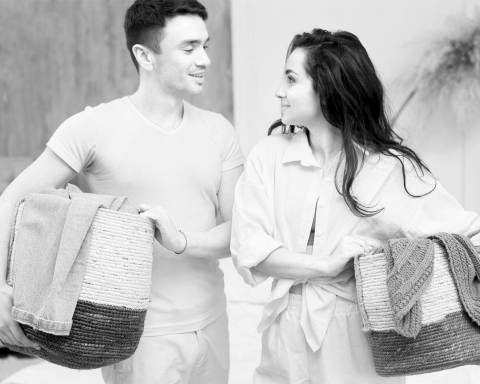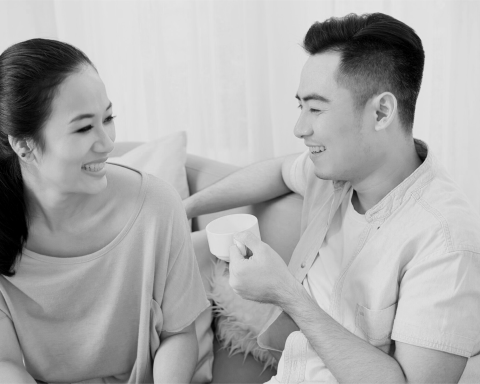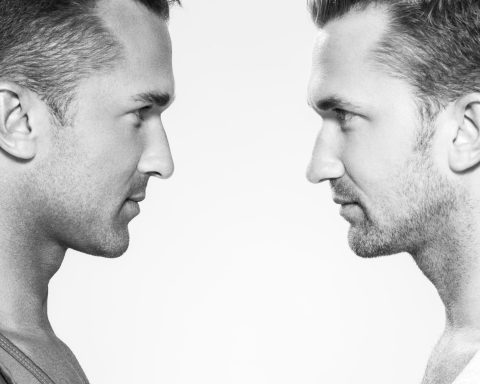The norms surrounding dating and relationships are heavily influenced by traditional gender roles, which set expectations for how men and women should conduct themselves in romantic situations. Gender expectations are influenced by society and can affect one’s behavior and traits. Different cultures and historical periods have varying standards for gender roles.
Unsurprisingly, men are often expected to be assertive and take charge in romantic situations, while women are expected to be more passive and nurturing. Traditional gender roles can limit individuals’ ability to authenticate themselves in relationships, leading to frustration, resentment, and dissatisfaction.
This article will help you explore ways to embrace individuality, promote equality, and build meaningful connections beyond traditional gender norms in a romantic relationship.
Understanding traditional gender roles in dating
In the realm of dating, certain societal expectations and norms dictate the appropriate behavior and interactions between men and women in romantic relationships.
Historical context and evolution of gender expectations
Before the Industrial Revolution, people got married as a duty to have children. Romance was not a priority, and personal fulfillment was not a consideration. Traditional gender roles were also typical, with women being submissive while men held authority and power within the household and were expected to be strong, rational, and the decision-makers.
During the Industrial Revolution, men started working in factories and offices. It resulted in the development of the “separate spheres” ideology, where men were expected to work in the public sphere while women focused on the private sphere as caring for the home and family.
While in the late 19th to early 20th century, early feminism emerged and took a stand against traditional gender roles. The movement aimed to secure women’s rights and equality in society, including their roles in romantic relationships.
Early feminists firmly believed that both partners should share equal responsibilities in the household, child-rearing, and decision-making. It challenged the long-standing notion that women were solely responsible for domestic duties (Chung, 2005).
In recent decades, there has been a continued push for gender equality and a rejection of traditional gender expectations in romantic relationships. Modern couples strive for fair partnerships, where they share responsibilities, make decisions together, and have equal opportunities for personal and professional growth.
Nevertheless, it is essential to acknowledge that gender expectations and stereotypes still exist to some extent and can vary depending on cultural and individual factors.
Gender role stereotypes and expectations in dating
In dating, there are commonly held stereotypes and expectations associated with gender roles. Here are some common stereotypes and expectations (Dinh et al., 2022):
Men as initiators and providers
Traditionally, men are expected to initiate and serve as primary financial providers in romantic relationships. This means they should approach the person they like, ask them out, make the first move, and pay for dates and gifts.
Women as passive partners and caretakers
Women are sometimes expected to be passive in romantic situations and are seen as caregivers. This stereotype can manifest in expectations that women should be patient in waiting for men’s first move while being empathetic and supportive.
Gendered appearance and presentation
Society expects how people should look and present themselves. Women are expected to look pretty and dress femininely, while men are expected to look strong and well-groomed.
Communication styles
Stereotypically, women are often seen as more expressive and talkative, while men are expected to be stoic and less emotionally expressive. These expectations can influence communication patterns and emotional expression within dating relationships.
It is important to challenge and overcome these stereotypes to promote equality and healthy relationships.
Impact of traditional gender norms on relationship dynamics
The impact of traditional gender norms on relationship dynamics can be significant and multifaceted. Here are some ways in which gender roles can affect relationships (Fielding, 2023; Pessin, 2017):
Power imbalances
When people believe that men should be providers and women should be emotional support, it can create an uneven balance of power and decision-making authority in relationships. This can cause disagreements and lead to conflict.
Limited expression and authenticity
Following traditional gender roles in relationships can prevent people from being their true selves and expressing their unique qualities and preferences. This may cause difficulty in aligning personal goals and sexual preferences with societal norms, making it hard to develop satisfying relationships.
Barriers to equality
Traditional gender norms can create barriers to achieving gender equality within relationships. Women might have trouble reaching their goals if expected to focus on housework. This can make it hard for them to be independent and have the same level of equality as their partner.
Lack of intimacy
It is common for men to feel like they need to act tough and keep their emotions bottled up, making it challenging to connect emotionally with their partners.
On the other hand, women may feel like they must put others first, neglecting their needs and creating distance in their relationships.
Higher rates of breakup
Unequal involvement is a strong predictor of romantic breakups. Inequality can lead to dissatisfaction and resentment, ultimately leading to the end of the relationship.
Breaking free: strategies for challenging gender norms in dating
Challenging traditional gender norms can lead to a more inclusive and fulfilling dating experience for all individuals involved. Here are some strategies to help you achieve them.
Communication with open dialogue
The expectations society places on individuals based on gender can often lead to unfair dynamics within partnerships. However, by fostering open dialogue, couples can challenge these deeply ingrained gender norms and pave the way for a healthier, more fulfilling connection.
Open dialogue allows partners to explore and share their thoughts, emotions, and experiences regarding gender roles and expectations. In a non-judgmental and empathetic space, more egalitarian relationships tend to negotiate more fairly, openly, actively, and repeatedly to introduce change into their relationships (Büchau et al., 2023).
As a couple, take the time to identify and discuss how certain gender norms might be affecting your relationship. For instance, consider whether financial provider responsibilities while dating are distributed equally or if certain expectations hinder personal growth and dreams.
Embracing individuality and self-expression
Both partners are encouraged to embrace their unique qualities, talents, and aspirations in a relationship that values individuality. This allows for self-expression and celebrates the diversity that exists within the couple. It also defies the notion that specific interests or behaviors are only associated with a particular gender.
When you and your partner support each other’s interests and hobbies, it greatly boosts your relationship. Whether you are working towards career goals or just enjoying a fun hobby, it is important to encourage and support each other. Doing so can make your bond stronger and more fulfilling.
To have a fair and happy relationship, focus on appreciating each other’s strengths instead of just dividing tasks like chores. Whether you are good at planning, executing, organizing, being calm, or being emotional, your contributions to the relationship matter.
By embracing these differences, you can build a relationship based on individuals’ strengths and personalities that works for both of you instead of feeling like you must follow society’s expectations. Relationship equality is not achieved by forcing into one standard but by acknowledging and respecting the distinct qualities and viewpoints that make each other unique.
Revitalizing dating traditions with empathy and respect
In today’s modern romance, it is essential to question and challenge the traditional dating norms deeply rooted in society. By approaching relationships with empathy and respect, you can create a more equal environment that empowers both partners to break free from gender stereotypes.
When you always pay the bills and choose the place to date, does your partner contribute more in other areas to balance things out? If there seems to be an imbalance, it is essential to have a constructive conversation about it.
Propose a plan for dividing tasks based on your strengths and preferences rather than splitting them down the middle. Approach the conversation respectfully and with empathy from a collective “us” perspective rather than viewing your partner as an adversary.
As you rethink dating traditions, you must question your behavior and recognize any gender-based stereotypes you may apply.
In conclusion
As a society, gender norms have long influenced and dictated how couples should behave in relationships and dating. While evolving, it becomes apparent that these old-fashioned stereotypes can be restrictive and bothersome. Breaking away from these traditional expectations is crucial to forming deeper and more satisfying connections.
Creating equal relationships means appreciating each other’s unique qualities and perspectives. Couples can work together as a team and divide roles based on their strengths and preferences. This leads to a balanced and fulfilling relationship.
Valuing individuality and equality benefits both couples and society as a whole. It’s time to change how people date and build a new era of love based on mutual respect and understanding.
If you would like to see more resources on gender equality, check out the Relationships Science Labs. The lab uses the research of the Institute for Life Management to produce courses, certifications, podcasts, videos, and other tools. Visit the Relationship Science Labs.
Photo by cottonbro studio on Pexels





